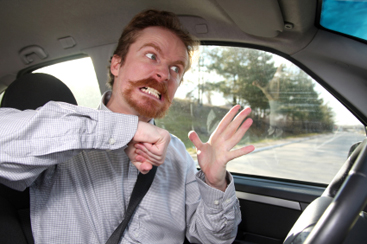|
|
| Anti-Socials |
| By Joe Bouchard |
| Published: 05/18/2015 |

The following is an installment in "The Bouchard 101", a series featuring "Ice Breaker's" designed to promote training awareness and capabilities in the corrections industry. Let’s face it, those who work in any segment of the criminal justice system need to know about criminal thinking. This is crucial vocational armor that takes the surprises out of many unusual behaviors that practitioners will witness in the field. Is there a quick and easy way to get students talking about the many deviant behaviors? Can we make them more interested in the topic? “The Anti-Socials” is a good introduction to anti-social thinking and behavior. The strategy is for the facilitator to set the stage for instruction in criminal cognition by:
Criminal thinking Staff relations Discrimination/ harassment Anatomy of a set-up Duration: This exercise lasts as little as five or ten minutes. However, there is a real potential that the exercise can last much longer. Of course, this depends on the facilitator, the audience, and the general energy level. Materials needed: Definition of anti-social Markers White board/sheets Alternately, the answers can be compiled on the spot with a computer and projected on a screen. DEFINE First, the facilitator asks the audience, “What does anti-social mean?” Then it is defined. In this case, I use The American Heritage Dictionary – “…opposed or hostile to the established social order; marked by or engaging in behavior that violates social mores.” PREPARE PARTICIPANTS Next, the facilitator can shift gears and illustrate this by telling a story of how children may behave in order to get what they want. I believe the stranger the story, the better for preparing the participants. This draws a parallel of anti-social thinking to some child behavior. Most modules would link those two concepts. The trainer may have a vast store of stories to relate. The story I tell revolves around a child who wishes to get her sister in trouble. (Children in this story are 4 and 6). The younger of the two observes the 6-year-old’s behavior and reports to their mother. (In other words, she tattles). This is a classic case of sibling rivalry. After a while, the 4-year-old discovers that the mother is not administering any punishment. The 4-year-old then lies about the older sister’s behavior with hopes of gaining primacy in her mother’s eyes. (I reserve the full details, voice imitations, gesticulations, and other nuances of this story for the classroom.) COMPILE The facilitator asks the simple question, “Can you name a famous anti-social?” With some encouragement, most trainers can get most audiences to come up with a baker’s dozen of anti-socials. Some suggestions may be groups of people and some may be actual individuals. Note: the facilitator should caution the participants not to use the name of anyone from the workplace, even if it is meant as a joke. The facilitator records the answers for all to see or solicits/coerces a volunteer. If the audience does not participate too well, here are some ideas that can be mentioned to get things moving: Hitler, Stalin, Ted Bundy, the Uni-bomber, terrorists, serial killers, human traffickers, con-artists, identity thieves. COMPARE Ask the class what sorts of behaviors have been perpetrated by each group or individual. This could segue nicely into the part of the module that defines the problem of anti-social thinking. I personally believe that it is useful to work from the negative (as it is so easy to point out) and work toward the positive solutions. Law abiding people and model citizens can gain an understanding of deviant behavior. One does not have to be a criminal to gain understanding in how criminals think. By taking a look at the “anti-socials,” participants are introduced into this and many other modules. And this just goes to prove that you don’t have to have a twisted mind in order to recognize twisted thinking. In fact, our success in the criminal justice field depends on that ability. Joe Bouchard is a Librarian employed with the Michigan Department of Corrections and a collaborator with The International Association of Correctional Training Personnel (IACTP). He is also the author of “IACTP’s Corrections Icebreakers: The Bouchard 101, 2014”. The installments in this series include his opinions. The agency for which he works is not in any way responsible for the content or accuracy of this material, and the views are those of the contributor and not necessarily those of the agency. While some material is influenced by other works, all of the icebreakers have been developed by Joe Bouchard. Visit the Joe Bouchard page Other articles by Bouchard: |
MARKETPLACE search vendors | advanced search

IN CASE YOU MISSED IT
|


Comments:
No comments have been posted for this article.
Login to let us know what you think